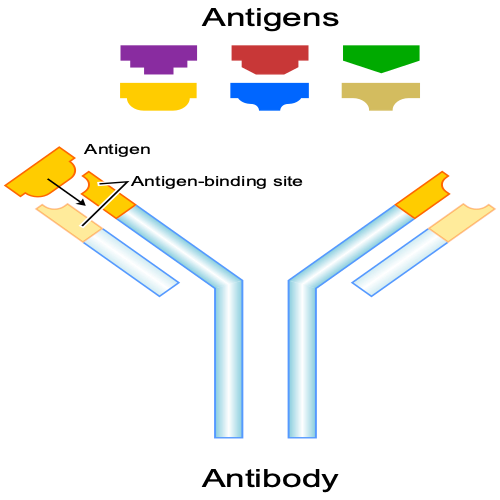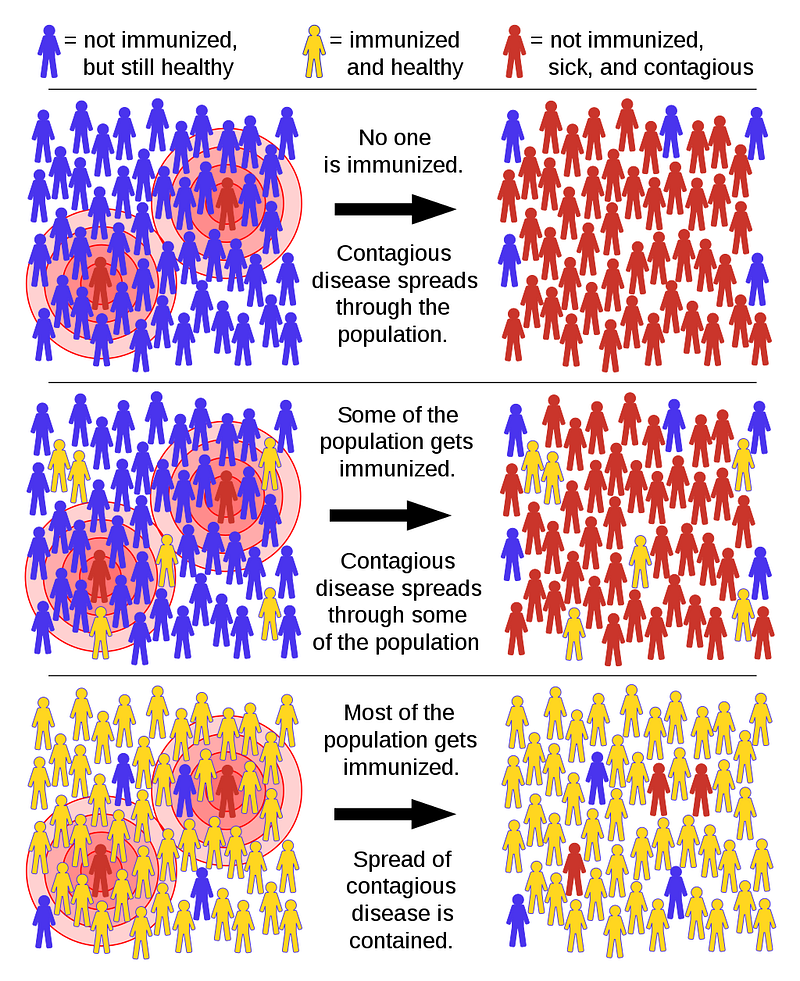Understanding the Mechanism of Vaccines: A Comprehensive Overview
Written on
Chapter 1: Introduction to Vaccines
The year 2020 marked a significant period where many of us had to familiarize ourselves with essential scientific and medical concepts. The term ‘vaccine’ emerged as a focal point, especially in discussions surrounding the pandemic. Health professionals, researchers, and doctors frequently addressed this vital subject, employing terminology like ‘herd immunity,’ ‘antibodies,’ and ‘transmissibility.’ Grasping the foundational principles of vaccines and immunology is crucial not only for our health but also for the well-being of those around us.
Section 1.1: The Role of Antibodies
Let’s delve into some basic immunology to understand antibodies better. Suppose you catch a common cold; you might feel miserable—sneezing, coughing, and experiencing body aches. While you’re resting and perhaps binge-watching your favorite series, your body is diligently working behind the scenes.

Photo by Isabella and Louisa Fischer on Unsplash
Your immune system is producing antibodies shaped specifically to attach to the structures on the cold virus. Antibodies are tiny, Y-shaped proteins generated in response to infections. They adhere to the surface of pathogens, facilitating their destruction by your immune system. Any agent that triggers antibody production is referred to as an antigen.

Fvasconcellos, Public domain, via Wikimedia Commons
Remarkably, your immune system can identify billions of distinct antigens and produce an extensive array of antibodies tailored to bind with specific antigens. However, this recognition and response can take time, sometimes extending to weeks or months. Consequently, your body requires time to mount an effective immune defense against an infection.
Over time, the levels of specific antibodies decrease, but specialized cells known as ‘memory cells’ retain information about the pathogen. If you encounter the same pathogen later, your body can swiftly generate an antibody response, thereby preventing you from falling ill with that disease again. This phenomenon is known as ‘immunity.’
Section 1.2: How Vaccines Work
Antibodies operate by attaching to particular parts of pathogens, necessitating a precise shape. A vaccine is a substance that enables the body to produce antibodies against specific pathogens by introducing a small quantity of a particular antigen. For instance, a vaccine may include:
- A singular component of the pathogen, such as a protein from the virus's exterior.
- An ‘attenuated’ (weakened) version of the live pathogen.
- A segment of the pathogen's genetic material, which can then be utilized by the recipient’s cells to produce a specific viral protein and trigger an antibody response.
The body identifies the antigen as foreign and, over several weeks, generates antibodies against it. If successful, the vaccinated individual will develop memory cells and possess some degree of immunity to the pathogen. Vaccines have played a pivotal role in eradicating devastating diseases like polio, smallpox, and measles, fundamentally transforming medicine.
Chapter 2: Historical Context of Vaccination
The first video titled "How do vaccines work?" provides a visual explanation of vaccine mechanisms and their importance in public health.
The term ‘vaccine’ originates from the Latin word ‘vacca,’ meaning ‘cow,’ which hints at the origins of its discovery. During the 1800s, smallpox was rampant across Europe, claiming the lives of approximately 400,000 individuals annually. Survivors often faced severe consequences, including blindness and disfiguring scars. In England, smallpox was colloquially known as the ‘speckled monster’ due to the sudden emergence of skin lesions in infected individuals.
It was widely believed that dairymaids who contracted cowpox, a milder disease, were protected from smallpox. In 1796, Edward Jenner, a physician and scientist trained in England, sought to test the hypothesis that deliberately inoculating individuals with cowpox would confer protection against smallpox. He inoculated a young boy named James Phipps with material from a cowpox lesion of dairymaid Sarah Nelms. Months later, Jenner exposed Phipps to smallpox fluid, and Phipps did not contract the disease, leading Jenner to conclude that he was immune.

Ernest Board, images.wellcome.ac.uk, Public Domain
Section 2.1: The Impact of Vaccination on Society
If a significant portion of the population becomes immune to a disease, whether through vaccination or natural infection, ‘herd immunity’ can be established. Herd immunity occurs when a pathogen cannot effectively spread within a community. As more individuals become immune, the transmission of the pathogen becomes increasingly challenging.
This concept is crucial because not everyone can receive vaccinations for various reasons, such as compromised immune systems. Achieving herd immunity means that the likelihood of unvaccinated individuals contracting the disease diminishes significantly.

By Tkarcher, Wikimedia Commons, CC BY-SA 4.0
There is no specific threshold percentage of immunity required to achieve herd immunity; this varies based on the disease and the efficacy of the vaccine in reducing infectiousness.
Section 2.2: Challenges in Vaccine Development
The second video titled "How do vaccines work? - Kelwalin Dhanasarnsombut" offers an insightful perspective on vaccine functionality and development challenges.
Despite the ability of vaccines to prevent many diseases, billions still fall ill from common ailments like colds and flu. Remember that antibodies are specifically shaped to fit certain pathogens. If a pathogen alters its structure, antibodies may not bind effectively.
With over 200 strains of cold viruses, creating a vaccine that offers immunity to all is incredibly challenging. Flu viruses are particularly notorious for rapidly mutating, frequently altering their antigens' shapes. This is why new flu vaccines are administered annually.

Photo by Elena Mozhvilo on Unsplash
The science behind vaccine technology and formulation is intricate and fascinating. The development of many vaccines can span months, years, or even decades. Therefore, it’s understandable to feel overwhelmed by the myriad of vaccine-related terms, especially in today’s context.
I hope this article has shed light on this complex topic. Stay healthy!